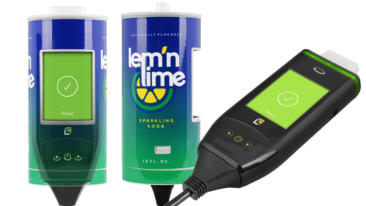Alaska OUI Laws and Penalties
Explained
When facing an OUI (Operating Under the Influence) charge in Alaska, it's vital to comprehend the state's OUI statutes and associated penalties for effective legal navigation.
Alaska OUI statutes are rigorous, imposing serious repercussions on those convicted, including monetary fines, license suspension, and potential incarceration. This resource delivers an in-depth examination of OUI penalties in Alaska to ensure you remain well-informed and ready.
An Overview of Alaska OUI Laws
Alaska OUI statutes are governed by Title 28. Motor Vehicles, which prohibits operating or driving a motor vehicle while under the influence of alcohol or controlled substances. The state imposes severe penalties for OUI violations, with consequences that escalate dramatically for repeat offenders.
Under Alaska law, Operating Under the Influence (OUI) of alcoholic beverages, chemical substances, or controlled substances constitutes a single offense, determined by impairment of normal faculties or an unlawful blood alcohol or breath alcohol level of 0.08 or above.
Alaska follows an "implied consent" statute, meaning that by driving on Alaska roadways, you automatically consent to chemical testing if lawfully arrested for OUI. Refusing to submit to testing results in automatic license suspension and can be used as evidence against you in court.
An Overview of Alaska OUI Penalties
Under Alaska law (Title 28. Motor Vehicles), OUI penalties encompass significant fines, possible imprisonment, license suspension, and mandatory ignition interlock device installation, with severity determined by your criminal record and case-specific factors.
These repercussions can profoundly affect your driving privileges, career prospects, and economic stability. Whether you're researching general information or confronting OUI charges, understanding Alaska's stringent laws and progressive penalties for each violation is essential.
Specific Penalties for a OUI in Alaska
Alaska OUI Fine Schedule
In Alaska, OUI fines intensify with each violation. The penalties become more severe if your blood alcohol level reaches 0.15 or higher or if a minor was present in the vehicle during the arrest. These situations are deemed exceptionally hazardous.
The state employs financial penalties to underscore the seriousness of impaired driving. Repeat violators encounter substantially elevated fines as a strategy to prevent recurring dangerous conduct and safeguard community welfare.
First Conviction
Second Conviction
Third Conviction
Fourth+ Conviction
Alaska Imprisonment Terms
Alaska enforces stricter incarceration terms for each OUI conviction. An initial offense may lead to up to one year behind bars, but elevated blood alcohol levels or aggravating circumstances can extend that punishment.
Subsequent offenses result in mandatory minimum imprisonment periods. The law also mandates that certain incarceration time be served in consecutive days to prevent the offender from easily avoiding the sentence.
First Conviction
- Minimum 72 hours to 1 year imprisonment
- Class A misdemeanor - served at residence
Second Conviction
- Minimum 20 days to 1 year imprisonment
- 160 hours community service plus electronic monitoring
Third Conviction
- Minimum 60 days to 1 year imprisonment
- Vehicle forfeiture may be ordered
Fourth+ Conviction
- Class C felony - Minimum 120 days to 5+ years imprisonment
- Permanent license revocation, vehicle forfeiture
Alaska Vehicle Impoundment/Immobilization
Alaska statutes may mandate the offender's vehicle be impounded following specific OUI convictions. The timeframe varies based on particular circumstances and previous offenses.
This consequence functions as a deterrent by restricting the offender's immediate capacity to operate a vehicle again. Vehicle impoundment or seizure may be mandated, particularly for repeat violators or when the vehicle facilitated the commission of the offense.
Unless the family has no other transportation:
Alaska Driver License Revocation Periods
Forfeiting your driver's license in Alaska following an OUI is routine, and the timeframe varies based on the offense details. Initial offenses commonly result in a suspension lasting 90 days, but that duration extends considerably for subsequent offenses.
Repeated offenses lead to significantly longer revocations. Following a fourth conviction, the state revokes your license for five years. In certain instances, you may petition for restricted driving privileges after completing a minimum period, but this is not assured.
First Offense
- • Without prior offense: 90 days - 1 year
- • Enhanced: With enhanced BAC: 180 days minimum
Second Offense
- • Within 10 years: 1 year minimum revocation
- • Enhanced: Ignition interlock for 12 months
Third Offense
- • Within 10 years: 3 years minimum revocation
- • Enhanced: Ignition interlock for 18 months
Fourth+ Offense
- • Permanent license revocation
- • Enhanced: Ignition interlock for 60 months
Serious OUI Offenses in Alaska
Alaska classifies OUI-related fatalities as grave felonies. OUI manslaughter can result in up to 15 years imprisonment and a considerable fine. If the driver abandons the scene, the charge becomes even more serious.
Vehicular homicide follows a comparable approach. These cases illustrate how Alaska differentiates between standard OUI charges and those resulting in loss of life. The legal ramifications mirror the irreversible harm caused by one careless decision.
OUI Manslaughter
- Second degree felony
- Up to $50,000 fine and/or 20 years imprisonment
Vehicular Homicide
- Second degree felony
- Up to $50,000 fine and/or 20 years imprisonment
Alaska Ignition Interlock Law and Device Guidelines
Alaska statutes require ignition interlock devices for specific OUI convictions. The mandates differ based on the offense severity and blood alcohol concentration during arrest. First-time violators with a BAL of 0.15 or higher must install an ignition interlock device for one year, while those with lower BAC levels require six months.
Repeat violators face compulsory ignition interlock mandates spanning from two to four years, depending on their BAL and conviction record. The device must be installed by a state-authorized provider and requires regular maintenance and monitoring.
All expenses related to the ignition interlock device, including installation, monthly monitoring fees, and removal, are the offender's responsibility. Tampering with or bypassing the device constitutes a separate criminal violation.
For complete statutory language and the most current information, please refer to:
Title 28. Motor VehiclesAlaska Department of Public Safety
About Low Cost Interlock
Low Cost Interlock is a premiere provider of ignition interlock devices in Alaska. Our ignition interlock services are designed to make the ignition interlock program easy and convenient for you, ensuring that you complete your interlock obligations without hassle. Our system has been tested to ensure reliability in an affordable, easy-to-use design.

